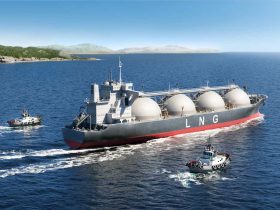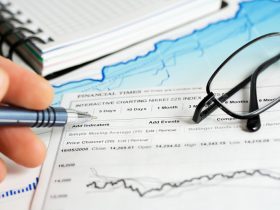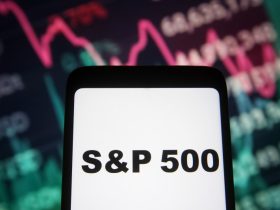By Darya Korsunskaya
(Reuters) -Russia has significantly raised its inflation forecast for the next two years and expects a much weaker rouble rate against the U.S. dollar, according to macroeconomic forecasts prepared by the economy ministry, as the costs of fighting the war in Ukraine mount.
President Vladimir Putin is girding the $2.1 trillion economy for a long war and though Western hopes of stoking a swift Russian economic crisis were proven misplaced, higher inflation and a weaker rouble could spur calls for higher rates and tougher currency controls to stem the outflow of capital.
Rising prices are also a concern for the Kremlin as it prepares for a closely controlled 2024 presidential election that Putin, Russia’s longest serving leader since Josef Stalin, is certain to win if he runs.
The economy ministry raised its 2023 inflation forecast to 7.5% from the 5.3% forecast published in April, and also raised its 2024 forecast to 4.5% from 4.0%, according to economy ministry documents, which have been submitted to government as a draft forecast.
The new inflation forecast implies that Russia will only reach the central bank’s inflation target of 4% in 2025 rather than in 2024, as planned by the bank.
The central bank in July saw 2023 inflation in the range of 5.0%-6.5%, reducing to 4% in 2024, however bank officials last week cautioned that price rises required decisive monetary policy measures and put at risk the inflation target.
After the rouble breached 100 per U.S. dollar last month before strengthening, the economy ministry now forecasts a much weaker rouble.
The ministry hiked its forecast for the average annual rouble rate to 85.2 roubles per U.S. dollar in 2023, up from the April forecast of 76.5 roubles, and to 90.1 roubles per dollar in 2024, up from the April forecast of 76.8 roubles. It sees the average annual rouble rate at 92.3 against the dollar in 2026, up from the April forecast of 78.8 roubles.
After public criticism from the Kremlin as the rouble fell below 100 per dollar in August, the central bank was forced to make an emergency rate hike of 350 basis points to 12% on Aug 15. The rouble was trading at around 95 to the dollar on Tuesday.
While the rouble and inflation are clearly concerns, the economy ministry raised its headline growth forecasts for 2023 and 2024 but lowered them for 2025 and 2026, in line with analysts’ expectations that Russia faces limited long-term growth prospects.
It more than doubled its 2023 gross domestic product growth forecast to 2.8%, up from 1.2% in April, and raised its 2024 forecast to 2.3% from the 2.0% April forecast. Unemployment, currently at a historic low in Russia, will remain at 3.1% for the period, the ministry said, underscoring the acute shortages on the labour market.
Putin, who has touted Russia’s resilience in the face of Western sanctions, on Tuesday praised the central bank for keeping a lid on inflation with double-digit interest rates and said there were no insurmountable challenges when it came to limiting the rouble’s volatility.
Prime Minister Mikhail Mishustin last week said oil and gas revenues had recovered, despite the attempt of the West to constrict the world’s biggest producer of natural resources with sanctions. He also pointed to strong manufacturing growth and good performance in the metallurgical and food industries, clothing, plastic and rubber sectors.
“Russian business continues to confidently adapt to external challenges,” he said.
Below are the main forecasts of the economy ministry’s base scenario upon which the finance ministry will base its draft budget. Previous forecasts are in brackets.
2022 2023 2024 2025 2026
Actual
price $/barrel 101.0 83.5 85.0 80.2 76.2
(80.7) (75.7) (71.9) (70.6)
Roubles per U.S. dollar, 67.5 85.2 90.1(76 91.1(77 92.3
average yearly (76.5) .8) .6) (78.8)
Export of goods, billion 590.8 459.1 471.0(4 481.1(4 496.7
$ (465.9) 84.0) 96.2) (505.1)
Import of goods, billion 276.7 313.8(3 319.7(3 326.8(3 335.5
$ 13.8) 32.8) 47.4) (362.7)
Trade balance, billion $ 314.1 145.3(1 151.3(1 154.3(1 161.2
52.1) 51.2) 48.7) (142.5)
Current account balance, 236.1 74.4 80.7 77.8(73 80.8
billion $ (86.8) (81.0) .6) (63.6)
GDP growth % yoy -2.1 2.8(1.2 2.3(2.0 2.3(2.6 2.2
) ) ) (2.8)
Industrial production, 0.6 3.6 2.6 2.2 2.3
growth % yoy (0.2) (2.5) (2.9) (3.0)
Inflation, % to Dec. 11.9 7.5(5.3 4.5(4.0 4.0(4.0 4.0
) ) ) (4.0)
Investments in fixed 4.6 6.0(0.5 2.3(3.2 3.0(3.7 3.0
assets, % yoy ) ) ) (4.5)
Retail trade turnover, % -6.5 5.8(5.3 3.6(3.5 3.4(3.5 3.5
yoy ) ) ) (3.6)
Real wages, % yoy 0.3 6.2(5.4 2.5(2.8 2.6(2.8 2.3
) ) ) (2.5)
Real disposable income -1.0 4.3(3.4 2.7(2.6 2.6(2.6 2.6
of the population, % yoy ) ) ) (2.7)
Unemployment, % 3.9 3.1(3.5 3.1(3.5 3.1(3.5 3.1
) ) ) (3.5)
Read the full article here











Leave a Reply